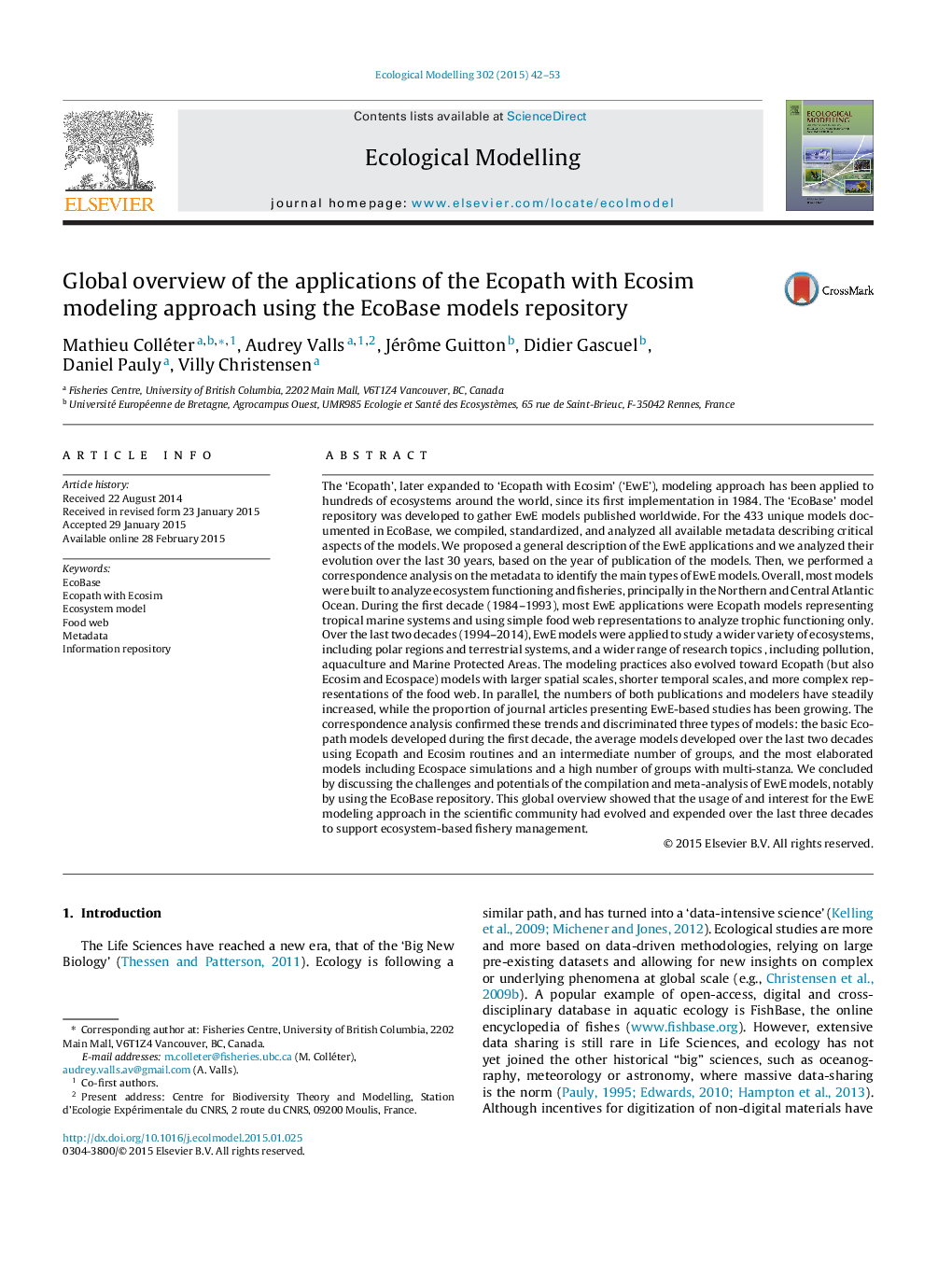| Article ID | Journal | Published Year | Pages | File Type |
|---|---|---|---|---|
| 4375746 | Ecological Modelling | 2015 | 12 Pages |
•433 EwE models published in the scientific literature and compiled in EcoBase.•Most EwE models analyzed ecosystem functioning and fisheries in the Atlantic Ocean.•EwE approach applied to a wider variety of ecosystems and research topics over time.•Ecopath models evolved toward larger areas and more complex trophic structures.•Increasing numbers of EwE publications, modelers and proportion of journal articles.
The ‘Ecopath’, later expanded to ‘Ecopath with Ecosim’ (‘EwE’), modeling approach has been applied to hundreds of ecosystems around the world, since its first implementation in 1984. The ‘EcoBase’ model repository was developed to gather EwE models published worldwide. For the 433 unique models documented in EcoBase, we compiled, standardized, and analyzed all available metadata describing critical aspects of the models. We proposed a general description of the EwE applications and we analyzed their evolution over the last 30 years, based on the year of publication of the models. Then, we performed a correspondence analysis on the metadata to identify the main types of EwE models. Overall, most models were built to analyze ecosystem functioning and fisheries, principally in the Northern and Central Atlantic Ocean. During the first decade (1984–1993), most EwE applications were Ecopath models representing tropical marine systems and using simple food web representations to analyze trophic functioning only. Over the last two decades (1994–2014), EwE models were applied to study a wider variety of ecosystems, including polar regions and terrestrial systems, and a wider range of research topics , including pollution, aquaculture and Marine Protected Areas. The modeling practices also evolved toward Ecopath (but also Ecosim and Ecospace) models with larger spatial scales, shorter temporal scales, and more complex representations of the food web. In parallel, the numbers of both publications and modelers have steadily increased, while the proportion of journal articles presenting EwE-based studies has been growing. The correspondence analysis confirmed these trends and discriminated three types of models: the basic Ecopath models developed during the first decade, the average models developed over the last two decades using Ecopath and Ecosim routines and an intermediate number of groups, and the most elaborated models including Ecospace simulations and a high number of groups with multi-stanza. We concluded by discussing the challenges and potentials of the compilation and meta-analysis of EwE models, notably by using the EcoBase repository. This global overview showed that the usage of and interest for the EwE modeling approach in the scientific community had evolved and expended over the last three decades to support ecosystem-based fishery management.
